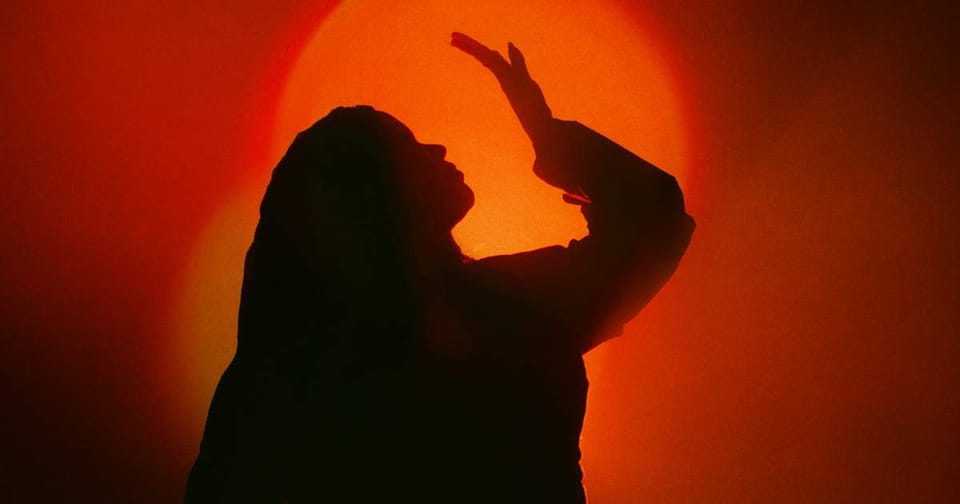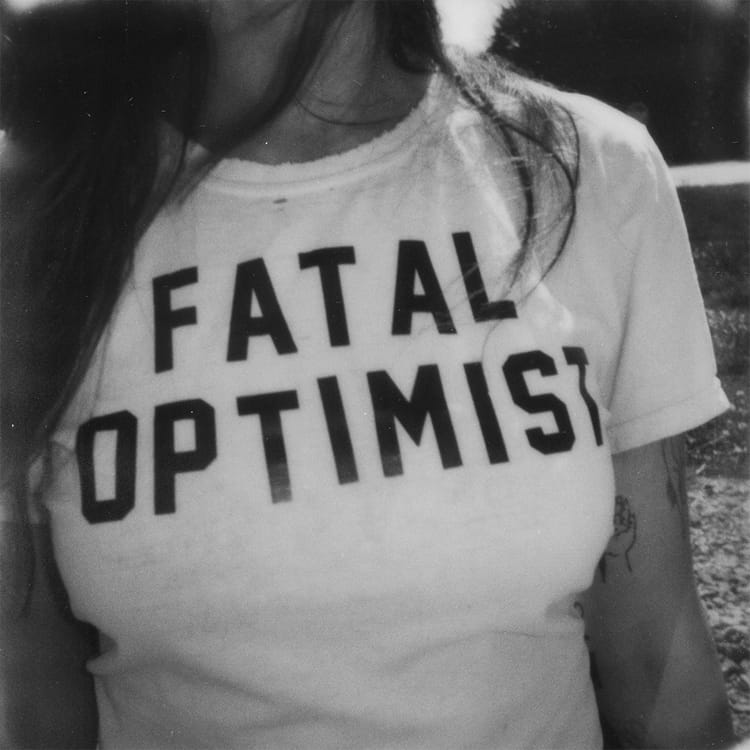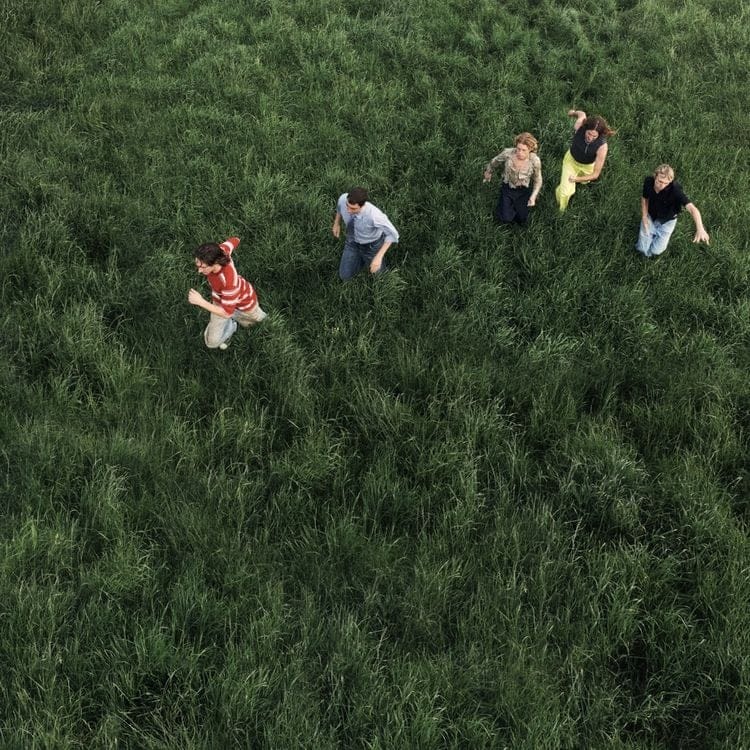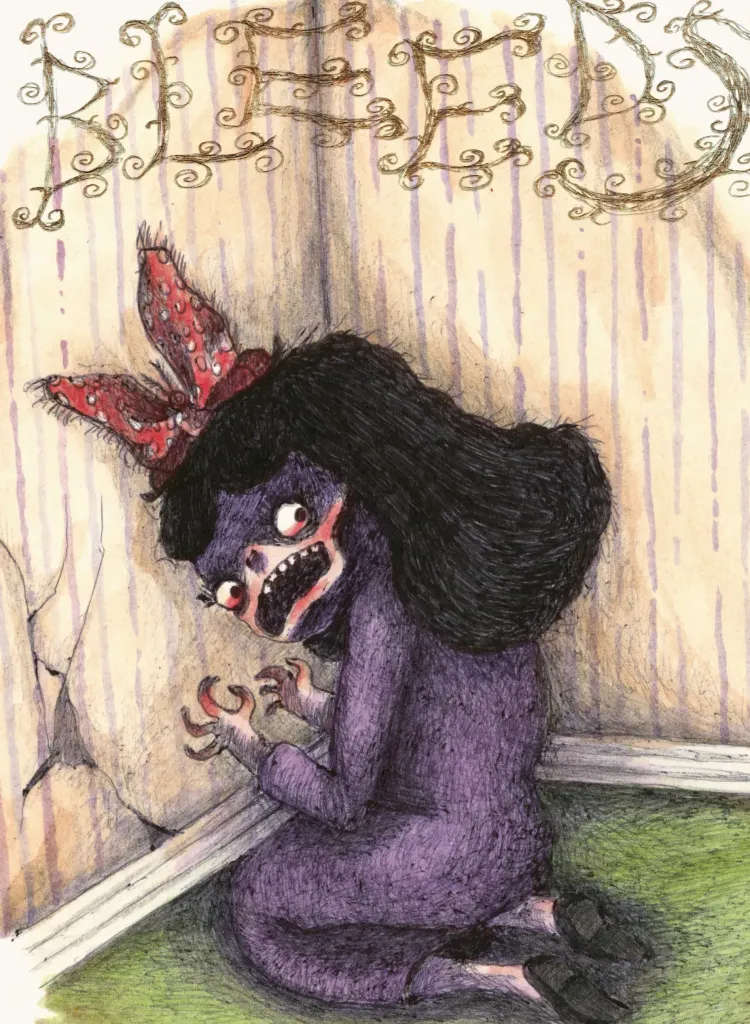Kanana by Bumpy: An In-Depth Analysis of the Album Track by Track

It’s 2025, and the world feels like it’s spinning faster than ever—cities pulse with restless energy, screens flicker with endless noise, and yet, in Naarm/Melbourne, a voice cuts through the static with the clarity of a desert wind. Bumpy, a proud Noongar woman, broadcaster, and soul artist, has delivered her debut album, Kanana, a record that feels like a long exhale after holding your breath for years. Released on October 3, 2025, through Astral People Recordings, this isn’t just an album; it’s a journey back to Noongar Boodja, the land where the sun sets, where Bumpy reconnects with her roots, her language, and the legacy of her late Nan, Rose Whitehurst, who penned the first Noongar dictionary. This is a record born from a pilgrimage, a tracing of Elders’ footsteps, a reclamation of stories whispered in the salt of the ocean and the heat of the earth.
Kanana matters because it’s more than music—it’s a cultural tether, a celebration of community, and a bold act of preservation. Where Bumpy’s 2023 EP Morning Sun hinted at her soulful prowess, Kanana dives deeper, darker, and more philosophical, weaving Noongar language and ancestral wisdom into lush, soul-funk grooves and cinematic soundscapes. The album’s themes are grounded in connection—to Country, to family, to self—while grappling with the weight of history and the urgency of cultural survival. It’s a record that invites you to slow down, to listen deeply, to feel the pulse of the land beneath your feet.
The artwork for Kanana is a visual poem in itself, crafted with eco-friendly, hand-dyed costumes by Tamara Leacock of REMUSE Designs. Bumpy embodies multiple personas—soft angel in the clouds, staunch boss in a towering hat—each reflecting the multifaceted nature of her identity and the album’s emotional range. The music video for the title track, directed by Emily Dynes with an all-queer, non-cis-male cast and crew, mirrors this ethos of community and care, creating a playground of childlike wonder and fierce pride.
This track-by-track journey will take you through Kanana’s world, from the yidaki rumble of its opening to the defiant crescendo of its close. Expect soulful storytelling, gritty authenticity, and a voice that carries the weight of generations with breathtaking ease. Let’s step into the land where the sun sets.
1. River Skies
Initial Impressions: River Skies is the album’s gentle yet commanding opener, a Wurundjeri Dreamtime story that sets the stage for Kanana’s spiritual and cultural depth. It’s not just a song; it’s a portal, transporting you to Country with the rumble of yidaki and clapsticks. As an introduction, it’s both an acknowledgment of the Wurundjeri land where Bumpy has lived for a decade and a call to slow down and listen.
Lyrics Analysis:
“River Skies” doesn’t lean heavily on lyrical density, instead using layered harmonies and sparse, evocative phrases to paint a scene. The song’s power lies in its atmosphere, with Bumpy’s vocals weaving through the choir’s ethereal backing like mist over a river. The lyrics, though minimal, carry the weight of place: “I always imagined, ‘I want this to be the opening of my album,’” Bumpy shared in an interview with Beat Magazine. The song is a deliberate act of grounding, honoring the land that nurtured her creative growth. It’s less about specific lines and more about the feeling of being “dropped on Country,” as Bumpy describes, with the choir amplifying the communal spirit.
Lyricist: Amy Dowd. © Astral People Recordings.
Melody and Musicality: The track begins with the primal hum of yidaki and the rhythmic clack of clapsticks, grounding the listener in Indigenous soundscapes. Bumpy’s vocals enter soft and vulnerable, then soar with effortless control, showcasing her dynamic range. The 14-piece Bumpy Choir, including Emma Volard and Isadora Lauritz, adds lush harmonies, while double bass (Alastair Watts) provides a warm, resonant foundation. The arrangement is spacious, almost cinematic, allowing each element to breathe. It’s a masterclass in restraint, building from meditative calm to a powerful swell that signals the album’s arrival: “Alright, welcome to the album—let’s go!”
Issue Relevance: River Skies is a cultural acknowledgment, paying respect to Wurundjeri Country while inviting listeners to engage with Indigenous storytelling. In a world that often rushes past such narratives, the song demands presence, urging us to honor the land and its stories. It’s a reminder of the importance of place-based identity, especially for First Nations artists reclaiming their voice in a colonized world.
Insights & Anecdotes: Bumpy revealed to Beat Magazine that River Skies originated from a commission with Darebin, led by Alara Briggs-Patterson, where visual and musical artists collaborated on a Wurundjeri Dreamtime story. “I wanted to get a massive choir and really acknowledge the place I’ve been living in,” she said. The recording process was a communal affair, with Bumpy arranging the choir and leaning on her creative community to bring the vision to life. The result is a track that feels like a collective ceremony, a moment of stillness before the album’s deeper journey.
Personal Evaluation: Listening to River Skies feels like standing on the banks of a river at dawn, the air heavy with possibility. It’s tender yet commanding, pulling you into Bumpy’s world with a quiet intensity. The song achieves its purpose as an invocation, setting a tone of reverence and connection that carries through the album. It’s not flashy, but it doesn’t need to be—its power lies in its authenticity and emotional depth.
Summative Evaluation: River Skies is a cohesive, soul-stirring opener that establishes Kanana’s thematic and sonic scope. Its strength is its ability to transport and ground simultaneously, though its minimal lyrics might leave some craving more narrative. Still, it’s a perfect entry point, inviting deep listening and setting expectations for the journey ahead.
2. Kanana
Initial Impressions: The title track is the heart of the album, a soulful ode to Noongar Boodja and the land where the sun sets. It’s a standout, not just for its lush instrumentation but for its emotional resonance, capturing the awe of witnessing Country’s beauty and the weight of ancestral connection.
Lyrics Analysis:
“Kanana / Land where the sunsets / I bet she’ll never forget / Djoowok baldga dji [generations firmly united for a moment]”
The lyrics are poetic and cyclical, mirroring the eternal return of the sunset. “Djoowok baldga dji” weaves Noongar language into the fabric of the song, a deliberate act of reclamation that ties generations together. The line “You can’t own the artwork in the sky / But you can witness it day & night, dark & light” speaks to the universal beauty of Country, accessible yet untouchable, a reminder of humility and shared humanity. The repetition of “Kanana set me free” feels like a mantra, a release from the constraints of modern life into the embrace of ancestral wisdom.
Lyricists: Amy Dowd, Mick Power. © Astral People Recordings.
Melody and Musicality: The track’s warmth comes from Alastair Watts’ double bass, which anchors the soulful groove alongside Hudson Whitlock’s steady drums and Mick Power’s shimmering guitar effects. Jake Amy’s Rhodes and organ add a dreamy texture, while the Bumpy Choir—featuring heavyweights like Emma Donovan—lifts the chorus into a spiritual plane. The arrangement is rich but never cluttered, balancing intimacy with grandeur. Bumpy’s vocals glide from soft introspection to soaring power, embodying the song’s theme of freedom.
Issue Relevance: Kanana is a love letter to Country and a call to preserve Indigenous language and culture. In an era where cultural erasure remains a threat, the song’s use of Noongar words and its celebration of communal witnessing speak to the urgency of protecting First Nations heritage. It’s a reminder that connection to land is not just personal but collective, a shared responsibility.
Insights & Anecdotes: The song’s music video, directed by Emily Dynes, is a visual extension of its themes, with Bumpy embodying different personas in Tamara Leacock’s handmade costumes. “We were dressing up and letting this inner-persona come to the forefront,” Bumpy told Beat Magazine, describing the shoot as a “childlike playground.” The all-queer, non-cis-male crew fostered a safe, collaborative space, reflecting the album’s ethos of community. The song itself was shaped during Bumpy’s residency with the Melbourne International Jazz Festival, where she returned to Noongar Boodja to reconnect with her roots.
Personal Evaluation: Kanana hits like a warm breeze across the plains, stirring something ancient and alive in your chest. It’s both grounding and liberating, making you feel part of something bigger. The song’s ability to balance personal reflection with universal awe is its greatest strength—it feels like a gift to anyone who’s ever stood in wonder at the natural world.
Summative Evaluation: Kanana is a triumph, a cohesive blend of soul, jazz, and Indigenous storytelling that captures the album’s core. Its only flaw, if you can call it that, is that its lushness might overshadow subtler tracks. But as a centerpiece, it’s near flawless, radiating warmth and wisdom.
3. Maambakoort
Initial Impressions: Maambakoort (Noongar for “ocean”) is a meditative gem, blossoming from a quiet lullaby into a majestic swell. It’s a standout for its emotional arc, capturing Bumpy’s reconnection with her Ancestors through the saltwater of Noongar Boodja. This is the album’s spiritual core, a song that feels like wading into sacred waters.
Lyrics Analysis:
“Maambakoort, Maambakoort / Ngang Katadjin / Koora yeyi / Dandjoo”
The lyrics are sparse but profound, blending Noongar language with English to evoke a sense of timelessness. “I arrive before the sun / I’ll be your introduction to feel something warm” sets a tone of arrival and awakening, while “Salty skin to salty water / I’m Daphne’s daughter” ties Bumpy to her lineage and the ocean’s embrace. The repetition of “I can hear the call / I can hear the melody / Or is it my memory” blurs the line between past and present, suggesting that Ancestral voices live in the body and the land. The Noongar phrases—Ngang Katadjin (I, my knowledge/learning), Koora yeyi (long time ago/present), Dandjoo (coming together)—are a linguistic bridge to her heritage, grounding the song in cultural reclamation.
Lyricist: Amy Dowd. © Astral People Recordings.
Melody and Musicality: The song opens with a contemplative minor-key lullaby, Mick Power’s guitar and Jake Amy’s Rhodes creating a delicate, almost underwater texture. Hudson Whitlock’s percussion and Benny Yarram’s additional percussion mimic the ebb and flow of waves, while the Bumpy Choir’s harmonies—featuring siblings Emmy, Ben, and Daniel—add a sacred weight. Bumpy’s vocals shift from whispered vulnerability to a powerful, meditative climax, mirroring the ocean’s swell. The arrangement is patient, letting the song breathe and build naturally, a testament to producer Nick Herrera’s finesse.
Issue Relevance: Maambakoort speaks to the power of reconnecting with Country and language, especially for First Nations people navigating the legacy of colonization. In a world where Indigenous knowledge is at risk, the song’s use of Noongar and its celebration of Ancestral connection is a defiant act of survival. It also resonates universally, inviting listeners to reflect on their own ties to place and memory.
Insights & Anecdotes: Bumpy described the song’s inspiration to Beat Magazine: “It felt powerful. It felt dramatic. The wind swirled around me and the light broke through the clouds. It felt like it recognised me.” Written after her return to Noongar Boodja with her mother, the song captures a visceral moment of standing in the ocean, feeling her Ancestors’ presence. The choir, including family and community members like Emma Donovan, was a deliberate choice to embody this connection. “They lead the way, especially in Maambakoort,” Bumpy said, highlighting the communal power of the recording process.
Personal Evaluation: Maambakoort is like stepping into the ocean at dusk—calm at first, then overwhelming in its depth. It’s a song that makes you feel small in the best way, connected to something vast and eternal. Its emotional arc is flawless, carrying you from introspection to transcendence. For me, it’s a reminder of the power of stillness and the stories that live in our bones.
Summative Evaluation: Maambakoort is a masterpiece of restraint and release, blending soulful introspection with cultural reverence. Its only potential weakness is its slow build, which might test impatient listeners, but for those willing to sink into it, it’s a profoundly rewarding experience.
4. Nan’s The Word
Initial Impressions: The album’s midpoint, Nan’s The Word, is a funk-driven, brass-infused tribute to Bumpy’s matriarchs, particularly her namesake, Rose Whitehurst. It’s a standout for its infectious energy and gospel uplift, a celebration of Blak women breaking barriers. This is the album’s beating heart, pulsing with pride and power.
Lyrics Analysis:
“Lead with love / Bring me to safety / They moved mountains so the river can flow”
The lyrics are a clarion call, honoring the strength and wisdom of Bumpy’s Nan and other matriarchs. “No preacher or thief / Can do what you can” elevates these women above societal structures, while “You coloured my days / Now here I stand” acknowledges their enduring influence. The repeated refrain “Nan’s the word” is both a declaration and a mantra, a nod to Rose Whitehurst’s legacy as a language preserver and a fierce, witty presence. The song’s message is clear: these women paved the way, and their love is a guiding force.
Lyricist: Amy Dowd. © Astral People Recordings.
Melody and Musicality: The track crackles with energy, driven by Hudson Whitlock’s crisp drums, Noah Hutchinson’s grooving bass, and Jake Amy’s sparkling Rhodes. Will Larsen’s horn arrangements—featuring baritone sax, bass clarinet, and trumpet—add a brassy swagger, while the 14-piece Bumpy Choir (including Emma Donovan and Bumpy’s siblings) delivers a gospel-infused uplift. Bumpy’s vocals are bold and commanding, channeling the “staunch lady” spirit of her Nan. The arrangement is tight yet expansive, balancing funk’s grit with soul’s warmth.
Issue Relevance: Nan’s The Word is a powerful ode to Blak matriarchs, whose resilience and wisdom continue to shape communities in the face of systemic barriers. In a cultural moment where Indigenous voices are still fighting for recognition, the song’s celebration of female strength and cultural preservation feels urgent and empowering. It’s a reminder that legacy is not just personal but communal, carried forward through storytelling and song.
Insights & Anecdotes: Bumpy shared with Beat Magazine that Rose Whitehurst, her namesake, was a “funny and witty” woman whose work on the Noongar dictionary was monumental. “She was so staunch,” Bumpy said, recalling childhood visits and the tapes of Nan’s voice they later digitized with the Australian Art Orchestra. The song was written as a tribute to all strong Blak women, with the choir—featuring family and friends—embodying that collective power. “This is for all our Blak Women who are breaking down the barriers,” Bumpy declared. “Nan is the gospel.”
Personal Evaluation: Nan’s The Word is a shot of pure adrenaline, a song that makes you want to stand taller and love fiercer. It’s joyous, defiant, and deeply moving, capturing the spirit of women who’ve shaped history against all odds. For me, it’s a reminder of the power of lineage and the responsibility to carry it forward. The song hits every mark it aims for, leaving you uplifted and inspired.
Summative Evaluation: Nan’s The Word is a near-perfect track, blending infectious funk with heartfelt tribute. Its cohesion and energy are undeniable, though its upbeat tone might briefly disrupt the album’s more meditative flow. Still, it’s a standout that radiates strength and community.
5. Lessons
Initial Impressions: Lessons is a brief, swirling interlude that bridges the album’s longer tracks, carrying the wisdom of Bumpy’s Nan: “Time is of the essence, time to learn your lessons.” It’s not a standout in the traditional sense but serves as a vital connective tissue, grounding the listener in reflection.
Lyrics Analysis:
The lyrics are minimal, built around the mantra “Time is of the essence, time to learn your lessons.” This simple phrase, drawn from Nan’s advice over a cuppa, carries profound weight, urging presence and growth. It’s less about narrative and more about pause, a moment to absorb the album’s deeper themes of legacy and learning.
Lyricist: Amy Dowd. © Astral People Recordings.
Melody and Musicality: The track is understated, with Jake Amy’s organ and Rhodes creating a lo-fi, almost hypnotic texture. Bumpy’s vocals are soft and introspective, supported by Emma Volard and Isadora Lauritz’s delicate backing harmonies. The arrangement is sparse, designed to feel like a breath between the album’s heavier moments, with Hudson Whitlock’s percussion adding subtle momentum.
Issue Relevance: Lessons speaks to the importance of intergenerational wisdom, a theme central to Kanana. In a fast-paced world, the song’s call to slow down and learn from Elders resonates deeply, especially for Indigenous communities working to preserve cultural knowledge. It’s a quiet but powerful reminder of the urgency of listening.
Insights & Anecdotes: Bumpy has noted that Lessons and its counterpart Essence were inspired by her Nan’s words, shared in casual moments that carried profound meaning. The track’s brevity was intentional, designed as a “swirling portal” (as described by PBS) to transition between the album’s stylistic shifts. Its lo-fi aesthetic reflects Bumpy’s desire to create a “little bubble” for the listener, as she told Beat Magazine.
Personal Evaluation: Lessons feels like a moment of stillness in a bustling world, a chance to sit with wisdom before moving forward. It’s not a song that demands attention but one that rewards it, offering a quiet space for reflection. For me, it’s a reminder of the small, profound moments that shape us.
Summative Evaluation: Lessons is a subtle but effective interlude, cohesive in its simplicity but lacking the standalone impact of other tracks. Its strength lies in its role as a breather, though it might feel fleeting for those seeking more substance.
6. Essence
Initial Impressions: Like Lessons, Essence is a short, lo-fi interlude, a companion piece that reinforces Nan’s wisdom: “Time is of the essence.” It’s transitional, guiding the listener toward the album’s climactic tracks with a sense of calm and clarity.
Lyrics Analysis:
The lyrics mirror Lessons, centering on the phrase “Time is of the essence” as a meditative anchor. The minimal text serves as a reminder to stay present, echoing the album’s broader themes of grounding and connection. It’s less about storytelling and more about creating a moment of pause.
Lyricist: Amy Dowd. © Astral People Recordings.
Melody and Musicality: The track leans on Jake Amy’s organ and clavinet for a warm, lo-fi vibe, with Bumpy’s whispered vocals floating over Noah Hutchinson’s bass and Ben Yarram’s understated drums. The arrangement is intentionally sparse, almost like a sketch, allowing the listener to sink into the album’s emotional flow. Emma Volard and Isadora Lauritz’s backing vocals add a soft, ethereal layer.
Issue Relevance: Essence reinforces the album’s call to mindfulness and cultural connection, urging listeners to value time and wisdom in a world that often disregards both. For Indigenous communities, this message carries extra weight, tied to the urgency of preserving language and stories before they’re lost.
Insights & Anecdotes: Bumpy described Essence as a counterpart to Lessons, both inspired by her Nan’s advice and designed to act as “brief, swirling portals” (PBS). The track’s lo-fi aesthetic was a deliberate choice to create a nurturing listener experience, as Bumpy told Beat Magazine: “I really wanted to make sure it was like a little bubble for the listener to be carried along.”
Personal Evaluation: Essence is a gentle reprieve, like a sip of tea between rich courses. It’s not meant to dazzle but to center, and it does so with quiet grace. For me, it’s a moment to breathe and reflect, though it leaves me craving the energy of the album’s bigger tracks.
Summative Evaluation: Essence is a cohesive interlude that serves its purpose but doesn’t linger long enough to leave a deep mark. Its strength is its simplicity, but it’s overshadowed by the album’s more dynamic moments.
7. Cosy Comfy
Initial Impressions: Cosy Comfy delivers exactly what its title promises—a warm, soul-funk groove that feels like sinking into a familiar armchair. It’s a transitional track, reinforcing the album’s theme of finding comfort in home and self, with a laid-back vibe that invites ease.
Lyrics Analysis:
“Cosy comfy with my cup of coffee / I’m home now / I don’t mind, if this is my everyday”
The lyrics are a love letter to simplicity, celebrating the quiet joy of routine and connection to place. “Lean on what my Mumma tells / Home is where you should be” grounds the song in familial wisdom, while “The city becomes unclear / Remind me what I’m doing here” hints at the tension between urban life and the pull of Country. The song’s conversational tone makes it relatable, a reminder to slow down and savor the moment.
Lyricists: Amy Dowd, Ben Yarram, Mick Power. © Astral People Recordings.
Melody and Musicality: The track is a soulful delight, with Ben Yarram’s drums and Noah Hutchinson’s bass laying down a tight groove. Mick Power’s guitar effects add a dreamy edge, while Jake Amy’s Rhodes, organ, and Wurli create a lush, warm texture. Will Larsen’s horn arrangements—baritone sax, bass clarinet, and trumpet—bring a playful swagger. Bumpy’s vocals are relaxed yet confident, gliding over the instrumentation with ease. The arrangement is polished but never overdone, embodying the song’s cozy ethos.
Issue Relevance: Cosy Comfy speaks to the universal need for grounding in a chaotic world, a message that resonates in an era of constant hustle. For Bumpy, it’s also a nod to her Noongar roots, where home is not just a place but a state of being tied to family and Country. It’s a subtle call to prioritize well-being and connection.
Insights & Anecdotes: Co-written with her brother Ben Yarram, the song reflects Bumpy’s collaborative approach. The inclusion of horns, arranged by Will Larsen, was a nod to classic soul flair, as Bumpy recalled in Beat Magazine: “He just came in and arranged it and brought all of that.” The track’s laid-back vibe was intentional, designed to evoke the comfort of home and the wisdom of her mother’s words.
Personal Evaluation: Cosy Comfy is like a warm hug from someone you trust—it’s comforting, familiar, and deeply satisfying. It makes me want to pour a coffee and sit still for a moment, a rare gift in a world that demands constant motion. The song nails its intention, offering a moment of respite without losing the album’s soulful edge.
Summative Evaluation: Cosy Comfy is a delightful track, cohesive and true to its name. Its only limitation is its transitional role, lacking the narrative depth of tracks like Maambakoort or Pressure. Still, it’s a perfect palate cleanser, radiating warmth and ease.
8. Feel Good
Initial Impressions: Feel Good is a vibrant, horn-driven anthem that lives up to its title, urging listeners to let loose and embrace joy. It’s a standout for its infectious energy, serving as a counterpoint to the album’s heavier themes while maintaining its soulful core.
Lyrics Analysis:
“Slow it down and give me / A little bit of something and / Maybe some time to feel free”
The lyrics are an invitation to release and revel, with lines like “I see the sunset, moonrise / And I meet them in the middle” capturing a sense of balance and harmony. The repeated question “Tell me does it feel good?” is both playful and earnest, encouraging listeners to find joy in movement and connection. The song’s simplicity is its strength, making it universally relatable while staying true to Bumpy’s grounded perspective.
Lyricist: Amy Dowd. © Astral People Recordings.
Melody and Musicality: The track is a soul-funk powerhouse, with Ben Yarram’s drums and Noah Hutchinson’s bass driving a tight, danceable groove. Jake Amy’s organ, clavinet, and Rhodes add a retro flair, while Will Larsen’s horn section—baritone sax, tenor sax, and trumpet—brings a celebratory punch. Bumpy’s vocals are buoyant, shifting from smooth croons to spirited calls, urging the listener to “get a bit loose.” Nick Herrera’s production shines, balancing polish with raw energy.
Issue Relevance: Feel Good is a reminder of the power of joy as resistance, especially for Indigenous artists navigating heavy cultural responsibilities. In a world often marked by struggle, the song’s call to slow down and feel good is radical, offering a moment of lightness without ignoring the album’s deeper themes.
Insights & Anecdotes: Bumpy’s intention was to create a track that embodied ease and celebration, as reflected in the song’s title and upbeat vibe. The horns, arranged by Will Larsen, were a nod to classic soul, while the involvement of her core band—many of whom she’ll tour with—added a live, communal energy. “We’re always keen to do as many shows as we can,” Bumpy told Beat Magazine, hinting at the song’s potential to ignite live audiences.
Personal Evaluation: Feel Good is pure sunshine, the kind of song that makes you want to dance in your kitchen or sing along in the car. It’s a burst of joy that feels earned, especially after the album’s heavier moments. For me, it’s a reminder that happiness can be a radical act, and Bumpy delivers it with infectious conviction.
Summative Evaluation: Feel Good is a cohesive, uplifting track that nails its intention, though its simplicity might not resonate as deeply as the album’s more narrative-driven songs. Its strength is its accessibility, making it a perfect crowd-pleaser for live shows.
9. Pressure
Initial Impressions: Pressure is the album’s emotional climax, a raw and powerful response to the 2023 Indigenous Voice Referendum’s failure. It’s a standout for its vulnerability and resilience, moving from mournful introspection to a defiant crescendo that demands to be felt.
Lyrics Analysis:
“I think I’m gonna burn down and take what’s mine”
The lyrics are raw and unflinching, with Bumpy confessing, “Some days it feels hard to try / There’s no time to feel alive.” Written in the wake of the referendum, the song grapples with anger and grief, but its heart lies in resilience: “Feel strong in my body, feel strong in my mind” becomes a mantra of empowerment. The line “Nobody else can take that away from me” is a powerful declaration of identity and agency, tying the song to Kanana’s broader themes of self-ownership and community.
Lyricist: Amy Dowd. © Astral People Recordings.
Melody and Musicality: The track begins with lonesome guitar (Mick Power) and Bumpy’s mournful vocals, creating a stark, intimate opening. The arrangement builds slowly, with crashing cymbals (Hudson Whitlock) and Noah Hutchinson’s bass adding tension. As the song crescendos, Bumpy’s vocals soar, backed by the choir’s uplifting harmonies. The horns (arranged by Will Larsen) amplify the climax, turning grief into defiance. The production, led by Nick Herrera, is masterful, balancing raw emotion with polished dynamics.
Issue Relevance: Pressure is a searing commentary on the emotional toll of systemic injustice, particularly for Indigenous communities post-referendum. Its themes of resilience and self-ownership resonate in today’s climate, where marginalized voices continue to fight for recognition. The song’s vulnerability makes it universally relatable, a reminder that strength often comes from embracing pain.
Insights & Anecdotes: Bumpy wrote Pressure as a direct response to the referendum, sharing with Beat Magazine: “I was speaking to my mum and my nan, who have worked in Community their whole lives. And then to see something like that and yarn to them about that outcome was just heartbreaking.” The song’s dramatic cymbal crashes were intentional, designed to evoke tension and release. Bumpy’s decision to engineer her own vocals gave her the freedom to explore raw, tender moments, making the track’s emotional arc even more authentic.
Personal Evaluation: Pressure is a gut-punch, the kind of song that leaves you breathless and empowered. It’s raw, real, and deeply human, capturing the weight of carrying a community’s hopes while finding strength in your own body. For me, it’s a reminder that vulnerability is a superpower, and Bumpy wields it with fearless grace.
Summative Evaluation: Pressure is a tour de force, blending raw emotion with soaring resilience. Its cohesion and impact are undeniable, though its intensity might overshadow subtler tracks. It’s one of the album’s strongest moments, a testament to Bumpy’s artistry and authenticity.
10. Untangling
Initial Impressions: Untangling closes Kanana with a reflective, soulful meditation on release and renewal. It’s not as explosive as Pressure but serves as a perfect denouement, tying the album’s themes together with a sense of hope and clarity.
Lyrics Analysis:
The lyrics are introspective, focusing on the process of unraveling emotional and cultural knots. While specific lyrics aren’t provided, the song’s title and context suggest a journey of letting go and finding peace. Lines like “I wonder if we’ll find what Kanana sees” (from the title track) echo here, implying a search for harmony and understanding. The song’s narrative ties back to Bumpy’s language journey and her reconnection with Country, offering a sense of closure.
Lyricist: Amy Dowd. © Astral People Recordings.
Melody and Musicality: The track is lush and cinematic, with Mick Power’s guitar and Jake Amy’s Rhodes creating a warm, enveloping soundscape. Noah Hutchinson’s bass and Hudson Whitlock’s drums provide a steady pulse, while the Bumpy Choir’s harmonies add a communal uplift. Bumpy’s vocals are both tender and powerful, guiding the listener through the song’s emotional arc. The arrangement feels like a sunrise, bright and hopeful, a fitting end to the album’s journey.
Issue Relevance: Untangling speaks to the universal need to release burdens and find clarity, particularly for Indigenous artists navigating cultural and personal identity. In a world grappling with division, the song’s message of renewal is a quiet call to healing, both individual and collective.
Insights & Anecdotes: Untangling was part of the Tooni commission, shaped during Bumpy’s residency with the Melbourne International Jazz Festival. Its reflective tone reflects her process of journaling and processing her trip to Noongar Boodja, as she told Beat Magazine: “I journaled on the way and was like, ‘Let’s take the immediate reactions or maybe even just really prominent experiences that happened on that trip.’”
Personal Evaluation: Untangling feels like the moment you step out of the water after a long swim, refreshed and renewed. It’s a gentle but powerful closer, offering a sense of resolution without tying things up too neatly. For me, it’s a reminder that healing is a process, and Bumpy guides us through it with grace.
Summative Evaluation: Untangling is a cohesive, heartfelt closer that ties Kanana’s themes together beautifully. Its reflective tone is a strength, though it lacks the dramatic punch of tracks like Pressure. Still, it’s a fitting end, leaving you hopeful and grounded.
Final Thoughts
Kanana is a journey worth taking, a record that weaves soul, funk, and Indigenous storytelling into a tapestry of connection and resilience. Bumpy’s voice—both literal and artistic—is a force, carrying the weight of her Ancestors while inviting us to slow down and listen. From the cinematic sweep of River Skies to the defiant crescendo of Pressure, the album balances introspection with celebration, grief with joy, and personal reflection with communal power. Its flaws are few—some interludes feel fleeting, and the shift between tones can occasionally jar—but these are minor in the face of its authenticity and emotional depth. Kanana is not just an album; it’s a cultural act, a reclamation of language and legacy, and a reminder that the land where the sun sets holds stories we all need to hear. Dive in, and let Bumpy carry you home. Rating 82/100





Member discussion